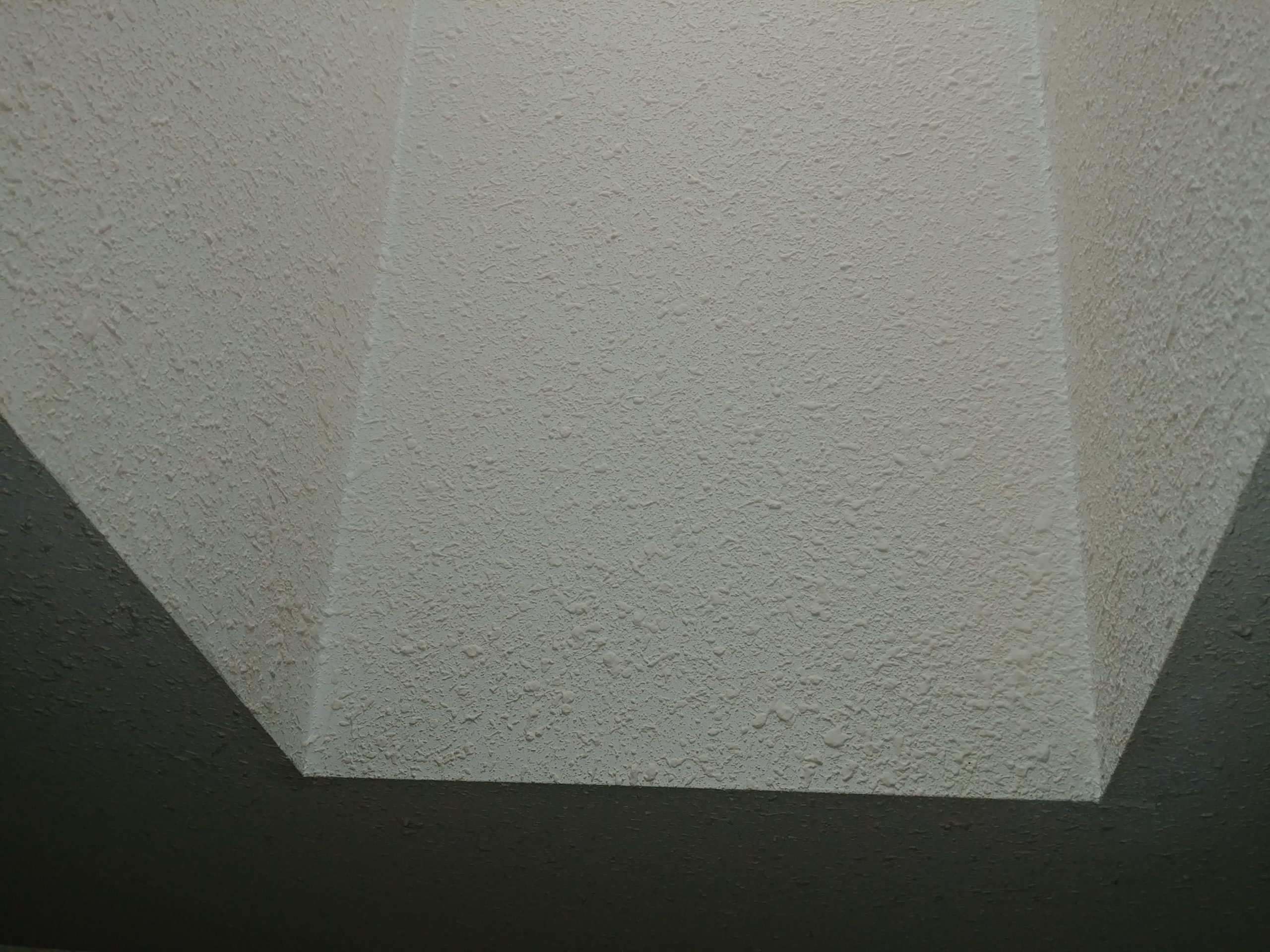Popcorn Ceiling, Textured Ceiling, Or Is Mine A Stipple Ceiling?
Popcorn Ceiling, Textured Ceiling, Or Is It A Stipple Ceiling?
Popcorn Ceiling, Textured Ceiling, Or Is It A Stipple Ceiling? It’s a question we are often asked. Let’s take a few minutes to help you understand the difference.
So we can all understand the terminology properly, we must first understand changes which occurred in the drywall and ceiling systems industry in the mid 1980’s.
In the mid 1980’s asbestos was removed from gyproc, a.k.a. drywall, and ceiling texture products. Once this transition happened, ceiling texture materials switched over to what is properly called “Spanish Texture”, but today is now simply referred to as Span Tex.
Popcorn Ceiling

(The image above shows popcorn ceiling which has been painted over.)
Popcorn ceiling is an umbrella term used to describe many different texture products from the pre-1985 era. These were all blown on applications.
The textured popcorn ceilings common in 1900’s homes offered many benefits, which is why they became so popular a finish. They were fire-resistant, insulated well against heat transfer and sound, and lasted for decades with little maintenance, other than the occasional re-painting.
By the late 1970’s, one big problem came to the forefront with regards to popcorn ceiling. Most of these older textured ceiling products were made with a mineral called vermiculite, which contained harmful asbestos fibres.
For the most part, as long as these asbestos ceilings were not disturbed (cut into, scraped, or accidentally rubbed), the asbestos did not filter through the home.
In 1977, the U.S. Government banned the use of asbestos in ceiling finishes, and most ceilings installed after this date will not contain asbestos. It is still possible, however, that materials manufactured before 1977 were installed in homes after the ban. Canada’s ban followed around 1985.
The problem…drywall products did not have an expiry date, and “old stock” remained for sale for years after the asbestos in these products was banned.
Stipple Ceilings
The term Stippled Ceiling is often used incorrectly. Most people use it to describe all forms of ceiling textures, but in it’s correct use, stipple ceilings refer to a ceiling product which is much tougher in design. Most stipple ceiling products have the appearance of a diluted plaster or stucco product, and these products are often rolled, stamped, brushed, trowelled, or to a lesser degree sprayed onto a ceiling. True stipple tends to be hard (caustic) on the rubber seals in a hopper gun, so spraying of this style of finish is no longer common.
By appearance, stippled ceilings may appear to have coarse grit in the plaster, and to the touch, a stippled ceiling will feel like outdoor stucco when rubbing the fingers along it.
Due to the toughness of ceiling stipple, it’s removal can have a bit of a higher cost.
Textured Ceilings, Spanish Texture, SpanTex, Splattered Texture

Today’s textured ceilings are predominantly sprayed on using a type of Spanish texture finish. Different manufacturer’s will have their own spin on the names for this product.
Essentially, the watered down texture is placed into a hopper style gun and shot or splatted up against the ceiling. The finished appearance can vary widely, due to the number of settings on the hopper gun, and the extent to which the trigger is pulled.
In some cases, the texture can appear to be droplets of wet mud thrown at the ceiling (splatter), while most often today, people prefer a fine, low profile, texture application.
This product dries hard, and often has a light cream colour on it’s surface. The product is easily painted after it has had three days to dry and cure.
Who Can Tell Me What’s On My Ceiling?
Textured-Ceiling-Repair.com is able to identify the texture on your ceiling, and in most cases we can create a texture to match your existing ceiling finish.





0